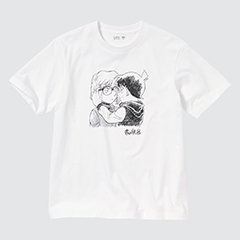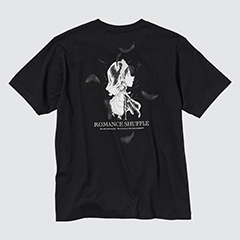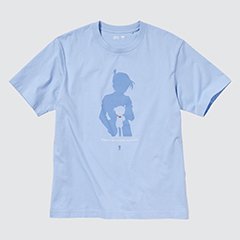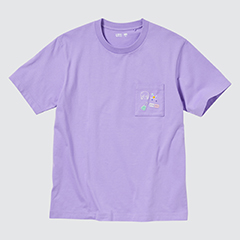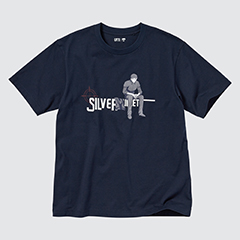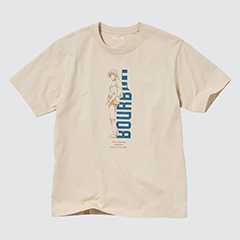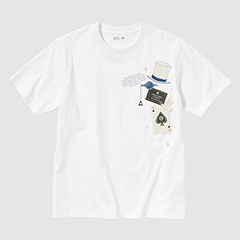Since its debut in 1994, Detective Conan (titled Case Closed in the English version) has dominated Japanese pop culture, with a manga series spanning 102 volumes, a hit animated TV series, and numerous successful feature film spin-offs. Over 270 million copies of the manga have been sold worldwide, including translated versions available in 25 countries and regions. This year, Conan is returning to UT! We spoke with Gosho Aoyama—the manga’s extraordinarily kind-hearted creator, who also has a great sense of humor—about his childhood, how Detective Conan came to be, and the upcoming film.
*The information in this article is accurate as of the interview date, February 24, 2023.
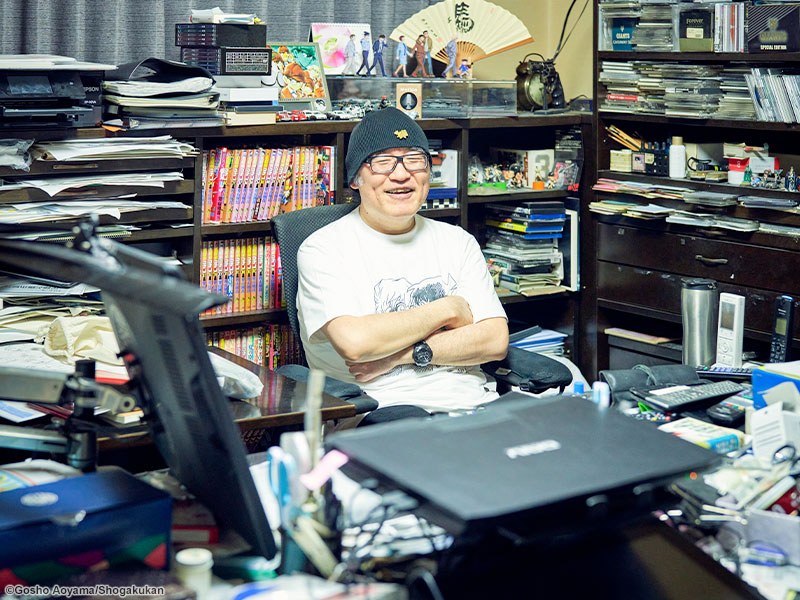
Aoyama reclines on a chair at his office—the same chair from which he writes all of Conan and his friends’ adventures.
What were you like as a child?
I was a strange child. I used to watch movies and fantasize in my head about what I would do differently if it were me. Nothing has really changed since then. When I watch a movie, it makes me happy when things turn out the way I’d imagined and even happier when they surpass my expectations.
And if things fall short?
Then I take my idea of what should have happened and put it in Detective Conan [hereafter Conan]!
That’s clever! What kind of manga did you read at that age?
I read a lot of different things, but the artists that really inspired me to become a manga artist were Mitsuru Adachi, Tetsuya Chiba, and Monkey Punch. You can see it in my drawings—my characters’ round eyes are just like Adachi’s, the pointed noses are Chiba’s, and the slightly upturned mouths are Monkey Punch’s. When you put them all together, you get my style. I said as much to Kazuhiko Shimamoto (the author of manga such as Aoi Hono), but he reacted like I was talking nonsense!
So that’s your secret! I heard that you wrote in your elementary school yearbook that you wanted to grow up to be a manga artist writing stories about private detectives. Have you always liked detective stories as well as comics?
I love them—Arthur Conan Doyle, Edogawa Ranpo, Maurice Leblanc. I must have come across them in the school library because their books are in libraries everywhere in Japan. The first story that really astonished me was “The Adventure of the Dancing Men,” a Sherlock Holmes tale by Doyle. In the story, there’s a creepy cipher that looks like stick figures, which I found bewildering and fascinating. That’s how I got hooked on mysteries.
So your childhood dreams came true with Conan.
Not exactly—by the time I became a manga artist, I had completely forgotten about writing that in my yearbook! I started Conan because my editor asked if I’d do a detective story. It was a pain in the neck at first but working on it made me remember how I used to like Sherlock Holmes.
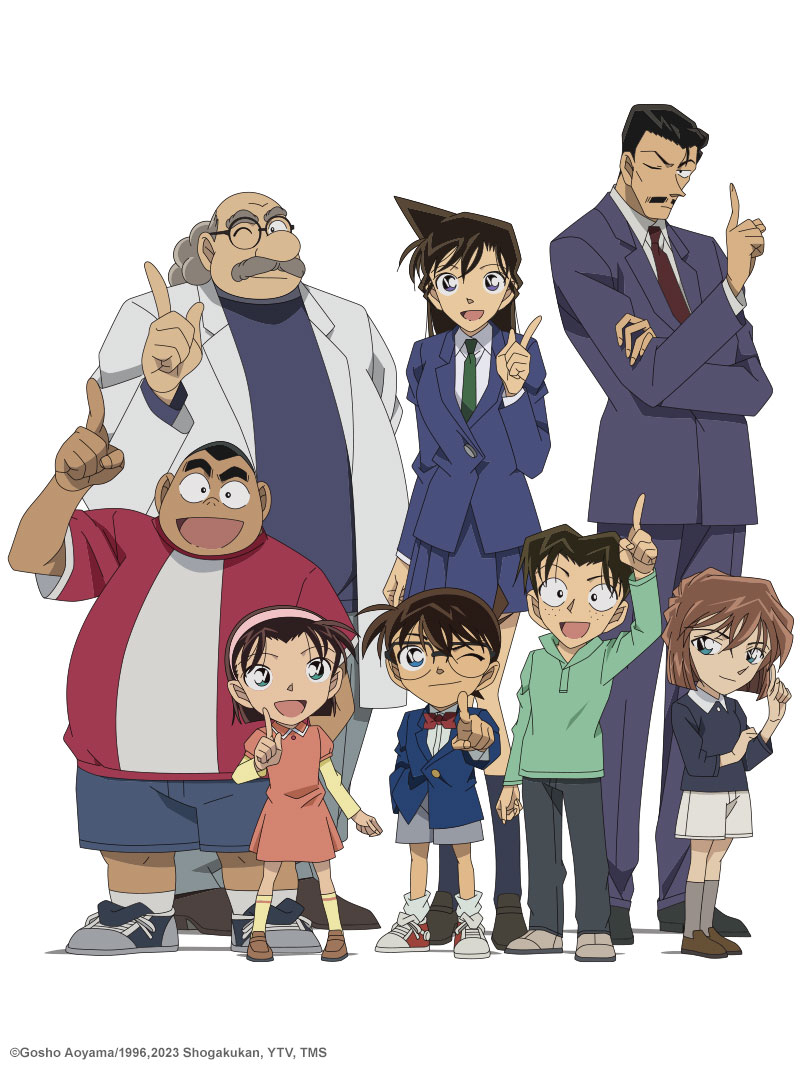
When Shinichi Kudo (Jimmy Kudo in the English version), a high school-aged detective, is poisoned by the mysterious Black Organization, his body shrinks to the size of a young child while his mind remains intact. Aware that the people around him may be in danger if The Black Organization realizes that he survived, Kudo adopts the name Conan Edogawa and lives the life of an elementary school student while solving various mysteries. His first name is taken from Arthur Conan Doyle and his surname from Edogawa Ranpo.
When you started the Conan series, did you have an exciting idea of where you wanted to take it?
I hate to say it, but I thought it would be over quickly. I wasn’t enthusiastic at all!
Really!? Conan was your first series after Yaiba, your first hit, so I thought you might feel as though you’d have to prove you weren’t just a one-hit wonder.
No, no. I thought it wouldn’t last and that I’d be able to do Yaiba 2 soon ! I didn’t really feel any pressure when I started Conan.
What do you think has kept Conan going for nearly 30 years despite that?
There have been many times, especially early on, when I’ve thought, “I can’t do this anymore.” But every time, something comes along to change my mind. Just when I was thinking that it was too much work, the detective TV show Furuhata Ninzaburo started and made me want to write Conan stories in that vein. Every time I began thinking that there was nothing left for me to do with Conan, that I’d already done everything I wanted to, something would come up: like I’d learn it was going to be adapted into an anime or a movie. I’ve been very lucky.
It seems like it would be a lot of work just to come up with a new “impossible crime” every time.
It is a lot of work. Sometimes I buy magician’s supplies to see if they might give me an idea. But it usually doesn’t work!
I wouldn’t have thought of buying magic supplies! Conan is a boys’ manga, but I think adults enjoy it as much as children. Do you intentionally write for an audience of boys?
No, I don’t write for boys. If I were to write something with the intention of having boys read it, they would see through my childish tricks. Some of the mysteries are simple, but mostly I write the manga for adults. After all, if a child encounters something they don’t understand, they look it up. I didn’t understand English when I read the “Dancing Men” story that I mentioned earlier, but I looked up the words in a dictionary. That’s how I learned that there are many English words that end in n. Kids are smart, and they look things up, so they do fine with complicated mysteries. And when it comes to adults, I hope that reading Conan transports them back to their childhoods.
You initially didn’t think that Conan would last, but you have been working on it for almost 30 years now. Have you decided when you’re going to end it?
Not yet. One fan said to me, “It’s like the Sagrada Família.” But that’s almost done, isn’t it?
Maybe so, but construction of the Sagrada Família will have taken over 100 years. Maybe that fan wanted Conan to continue for over a century too. Speaking of fans, they were polled on their favorite episode when the 100th volume of Conan was released, and “Reunion with the Black Organization” came out on top. One of the designs in this UT collection is from that episode.
I put a lot of effort into that one. Of course, I put in a lot of effort into every story but especially so with that one. It was the first time Conan and his friends confronted the Black Organization directly. I particularly like the scene on the T-shirt, which I think the audience picked up on. It even shows up in one of the movies; and I did draw the original!
It’s when Conan gives his glasses to Ai Haibara (Anita Hailey in the English version), who is being pursued by the Black Organization.
You know, I like Superman, who always wears glasses to hide his true identity. Conan wears his glasses for the same reason. In this scene, Conan tells Haibara, “If you wear my glasses, they’ll never discover who you really are. Even Clark Kent wishes he had a pair like these.” I’d been wanting to draw that scene for a long time, so I was ecstatic to finally get to do so. It was like, “Finally!”
How did you feel about drawing the scene again for UT?
They look quite a bit different this time. They were a little rounder back then, no? Their heads were bigger.
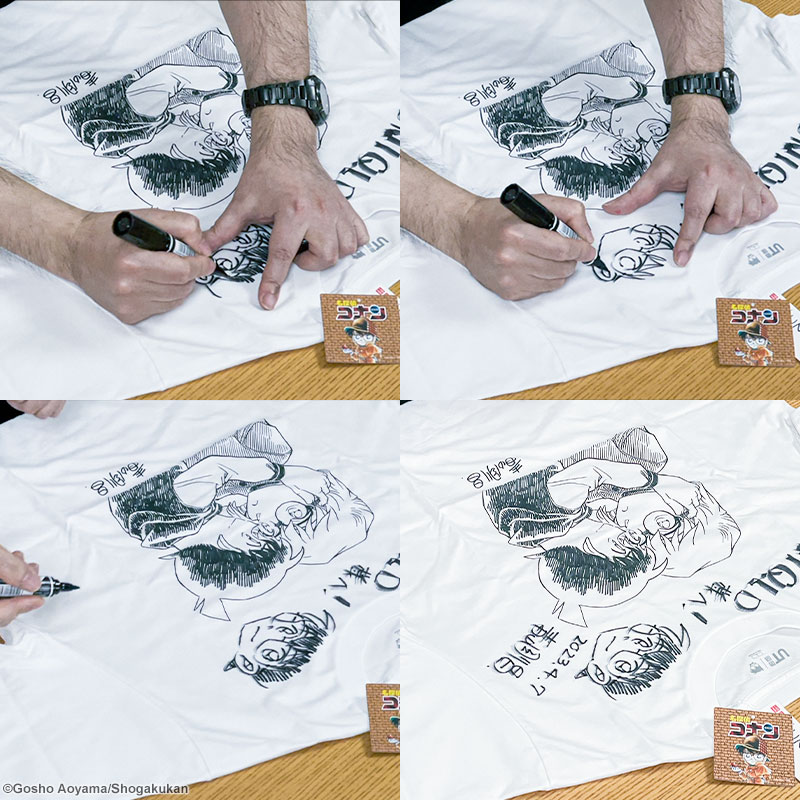
Aoyama created a special T-shirt design just for this collection; we couldn’t help but ask him to draw Conan on one of the shirts with his own pen! “The first thing I draw is Conan’s eyes,” he says, “but I don’t follow any particular order after that.”
Did any of the other T-shirts catch your eye?
Kid the Phantom Thief design! It’s really stylish.
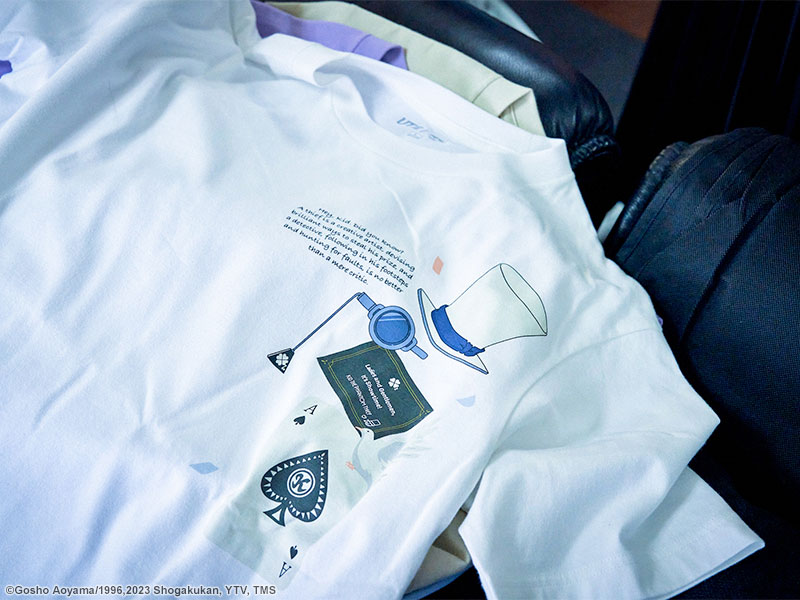
Speaking of clothing, I tend to think of you as always wearing black. Are you picky about what you wear?
Just that I only wear black and gray. The inside of my closet is almost all black. Everything goes well with black, right? If you wear a red T-shirt underneath, it still goes well together. Also, I just like to hide; I don’t like people noticing me!
You’re practically a member of the Black Organization! The latest film, Detective Conan: Black Iron Submarine, will be released in April. Can you tell us about any moments to look forward to?
There is one scene where I made a lot of changes to the storyboard. The director had inserted it in the storyboarding stage, but I told him, “I think it would be better to do this instead.” He responded immediately and reorganized it in a great way. It’s an underwater scene featuring a few key characters. I think it will be a highlight—it will make people gasp out loud.
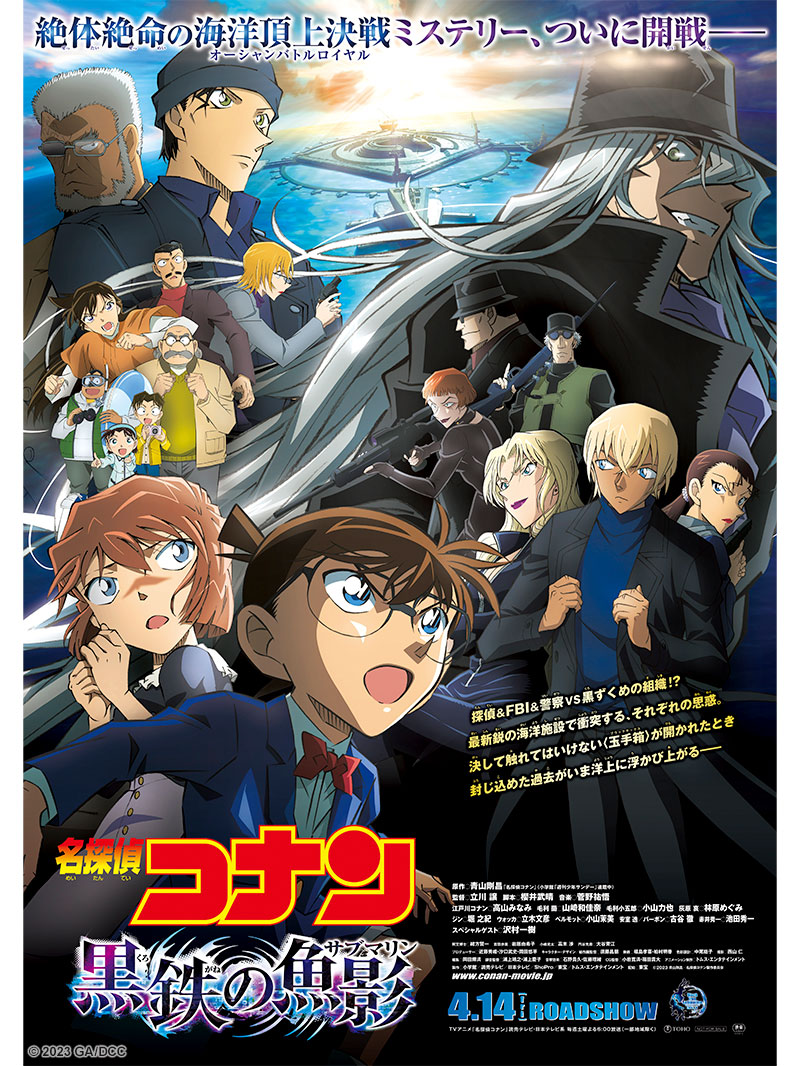
Detective Conan: Black Iron Submarine
The 26th Detective Conan feature film is set in Pacific Buoy, a marine facility off the coast of the remote Hachijo Island where information from law enforcement cameras around the world is aggregated. There, Conan and the Junior Detective League confront The Black Organization. Black Iron Submarine will be released in Japan on April 14.
This will be the 26th Detective Conan film. If you had to pick your favorite, which would it be?
Let’s say the next one. I heard that when Charlie Chaplin—the world’s greatest comedian—was asked what his best film was, he replied, “The next one.” So I’ll just imitate him!
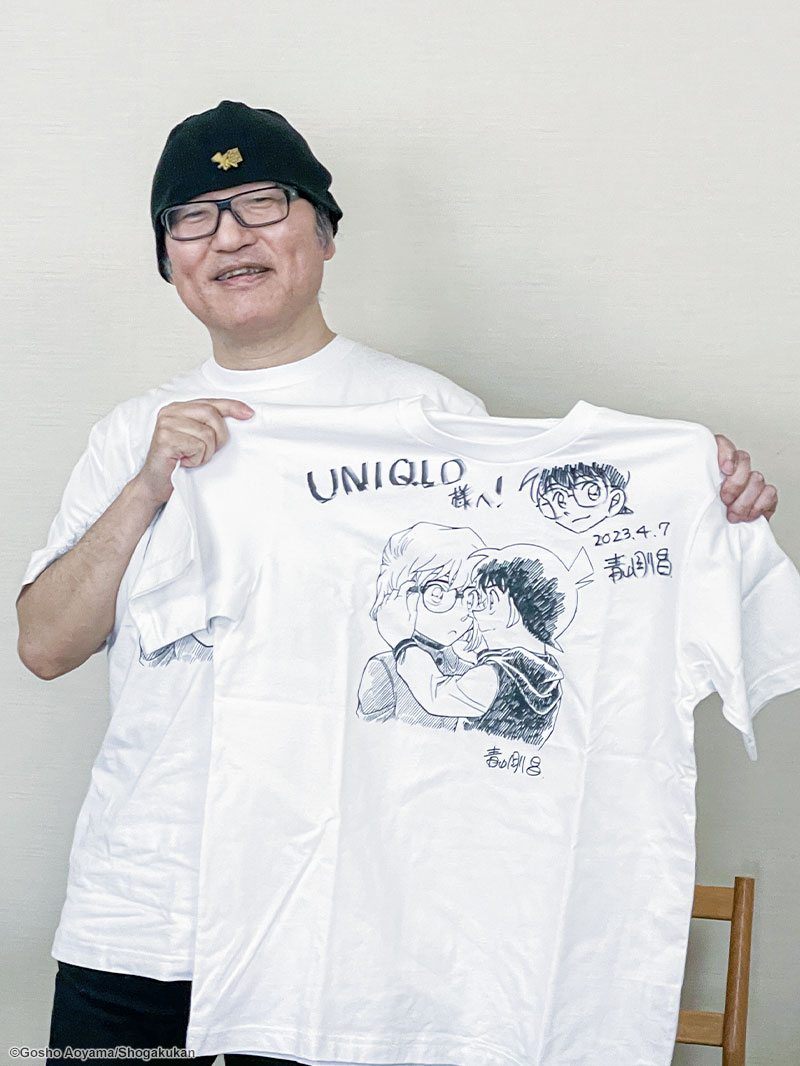
PROFILE
Gosho Aoyama | Aoyama was born in Tottori Prefecture and began his manga career in 1986, when he was awarded the Shogakukan Newcomer Comic Award. His ongoing series Detective Conan (titled Case Closed in the English version) was first serialized in 1994 in Weekly Shonen Sunday (published by Shogakukan) and has sold over 270 million copies worldwide across 102 volumes. Aoyama won the Shogakukan Manga Award for Yaiba in 1993 and for Detective Conan in 2001.
This scene is from “Reunion with the Black Organization,” which was voted as the most popular Detective Conan episode. Aoyama drew this special version just for this collection.
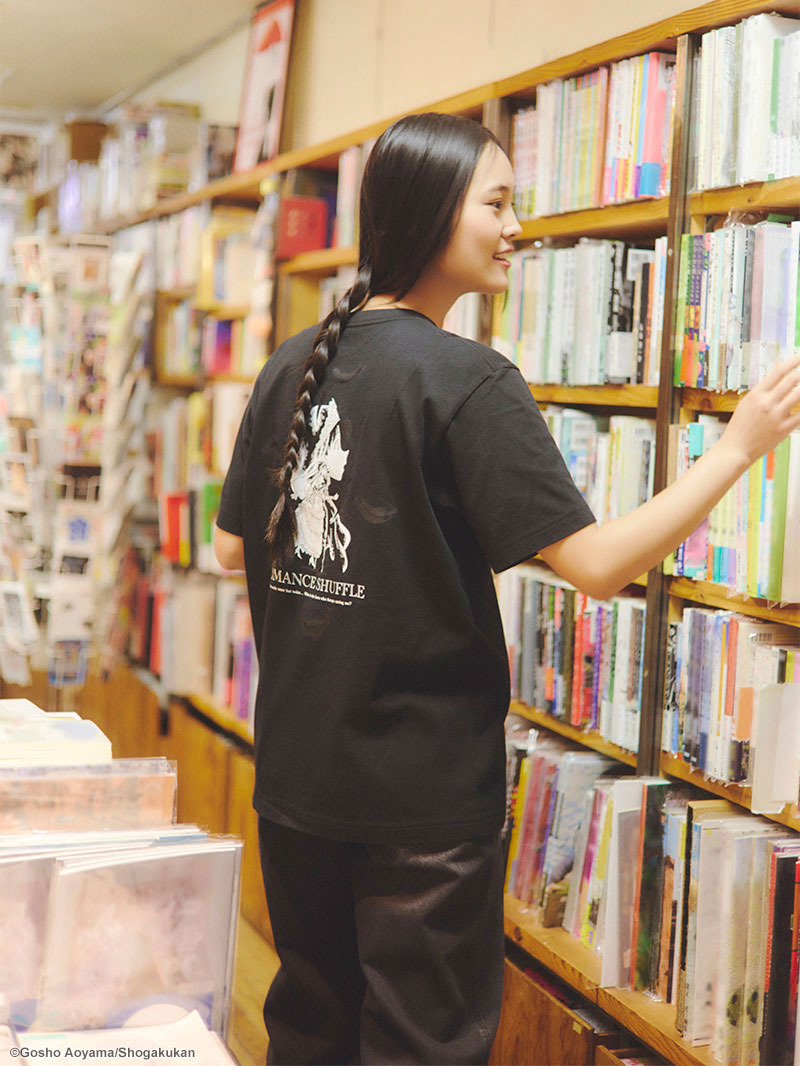
The back of this T-shirt is inspired by the famous scene in which Shinichi (Jimmy in the English version), dressed as a knight, suddenly embraces his childhood friend Ran Mori (Rachel Moore in the English version), who is playing a princess in her high school theater production. This exclusive image is from the original manga.
Conan’s silhouette is superimposed over that of Shinichi (Jimmy), with Conan’s trademark red bowtie drawing the eye. Conan’s famous line—“There is always only one truth!”—is printed below the silhouettes.
As a member of the Black Organization, Ai Haibara (Anita Hailey in the English version) developed the drug that Shinichi (Jimmy) was forced to ingest. After taking the drug herself and turning into a child, she begins to cooperate with Shinichi. The chest pocket of this T-shirt reflects her history as a scientist.
Shuichi Akai is an FBI agent and gifted sniper. He is shown sitting on the words “Silver Bullet,” the phrase used by Vermouth, a member of the Black Organization, to refer to Conan and Akai.
The many faces of Bourbon, a member of the Black Organization, give him a magnetism that’s hard to describe. In this design, his code name and the words he speaks when he first meets Ai Haibara (Anita Hailey) hint at that appeal.
Conan’s rival is Kid the Phantom Thief. Various items that represent his character—a top hat, a monocle, a calling card, and a playing card—are scattered over a background in his signature white.
Release dates and prices may vary. Some items might be limited to certain stores or countries of sale or may be sold out.
©Gosho Aoyama/Shogakukan
©Gosho Aoyama/1996,2023 Shogakukan, YTV, TMS
© 2023 GA/DCC

